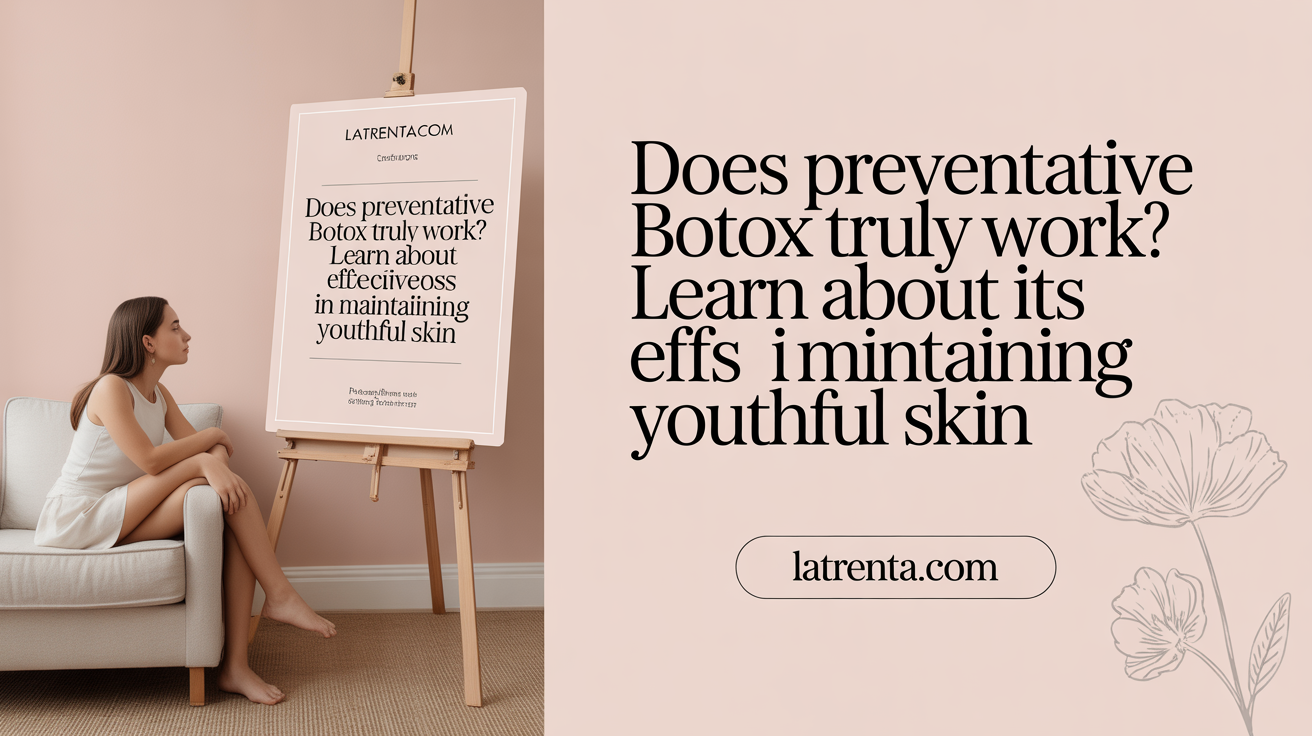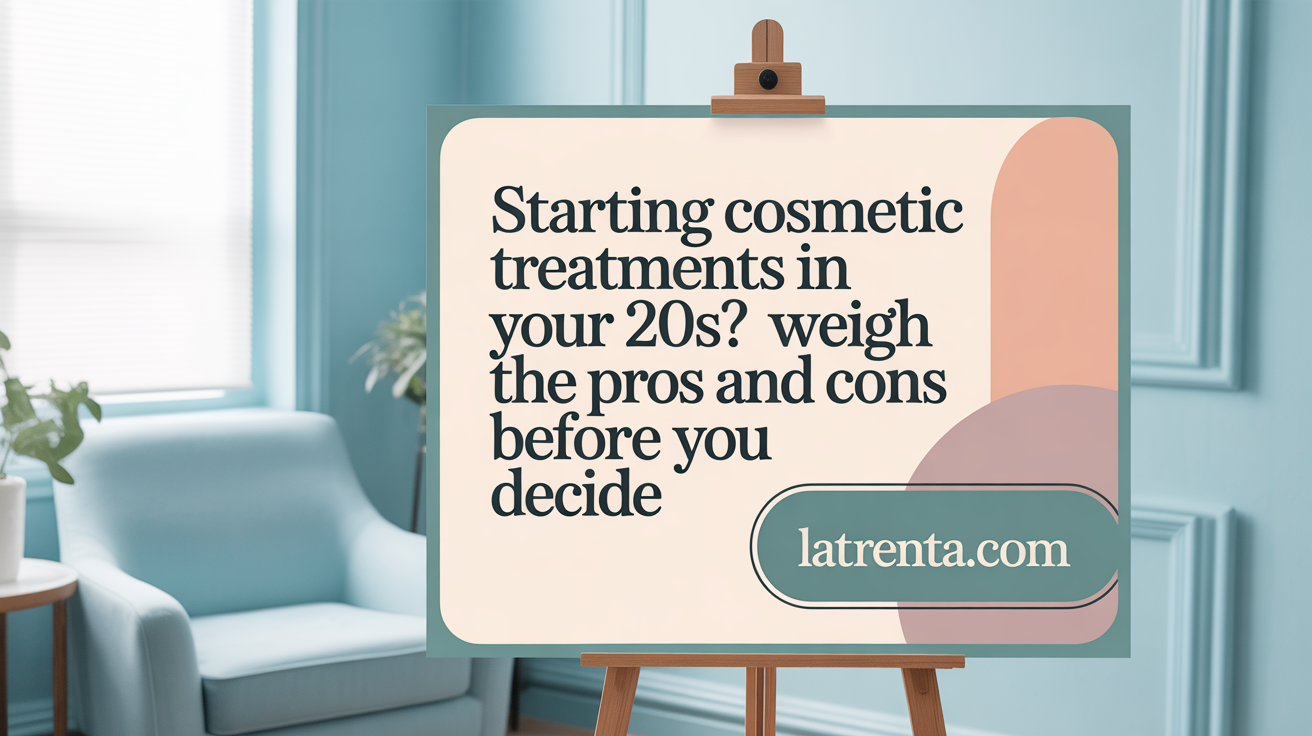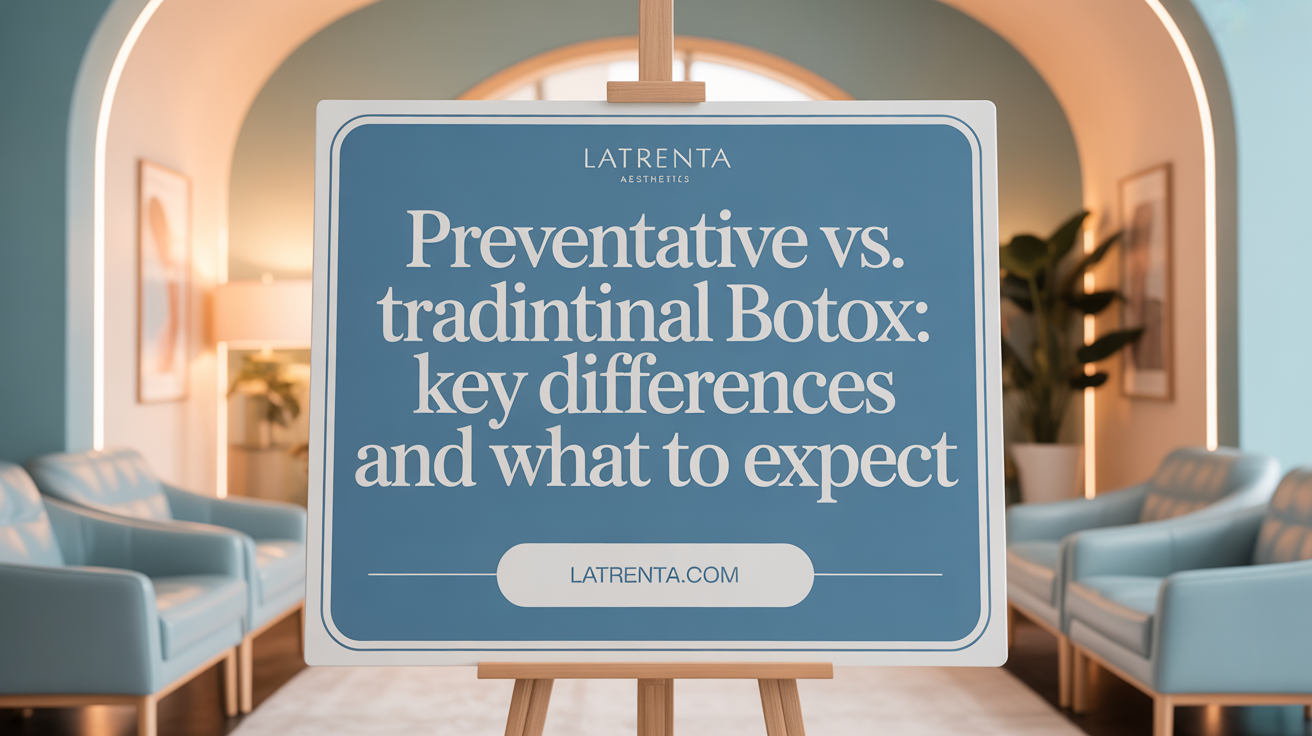Exploring Preventative Botox for Younger Skin
As people in their 20s increasingly turn to Botox before wrinkles set in, understanding its benefits, risks, and overall value is essential. Preventative Botox aims to slow the aging process by tackling wrinkles before they fully develop. This article unpacks how preventative Botox works, the right age to start, what experts say, costs, risks, and alternative methods to maintain youthful skin naturally.
Understanding Preventative Botox: How It Works and What to Expect

What is preventative Botox and how does it work?
Preventative Botox is a proactive skincare approach that involves injecting small doses of Botox muscles are already active and causing early fine lines, especially in areas like the forehead, around the eyes, and the neck. The goal is to relax these muscles slightly, reducing repetitive movements that lead to wrinkle formation.
Mechanism of action
Botox works by blocking nerve signals to targeted muscles. When nerves are unable to communicate with muscles, the muscles relax, leading to a smoothing effect on the skin. This prevents the formation of dynamic wrinkles—those that appear during facial expressions—and helps delay the appearance of static, permanent lines.
Targeted treatment areas
Common areas for preventative Botox include the forehead, brow lines, crow’s feet, and sometimes the neck bands. These regions are prone to develop expressive lines early due to the frequent movements of facial muscles. Experts often recommend starting treatments when fine lines first become noticeable, typically in one’s late 20s to early 30s.
Differences from traditional Botox
Traditional Botox is usually used to treat existing deep wrinkles andage-related sagging, often combined with other procedures like fillers. Preventative Botox, on the other hand, aims to stop or slow wrinkle development at an earlier stage. It involves lower doses, more precise targeting, and may be administered more frequently initially to train muscles to move more gently.
Typical treatment process and results timeline
A preventative Botox session is quick, often taking under 30 minutes. Small doses of the toxin are injected into specific muscles using ultra-fine needles. Results are gradual, with subtle softening of lines noticeable within a few days. Full effects typically appear by about a week, and the effects last around 3-4 months. Regular maintenance every few months helps maintain a smoother, youthful appearance and can prolong the need for more invasive procedures.
This approach emphasizes natural results, with minimal downtime and risks when performed by experienced professionals. Overall, preventative Botox offers a proactive step in managing skin aging, especially for those with early signs of expression lines or a family history of early aging.
Evaluating the Effectiveness of Preventative Botox in Youthful Skin

Does preventative Botox work in reducing signs of aging?
Preventative Botox has become a popular choice among young adults, especially those in their 20s and early 30s, aiming to delay the formation of wrinkles before they fully develop. This treatment primarily works by preventing excessive muscle movements that cause dynamic wrinkles—temporary lines that appear when making facial expressions.
When Botox is injected into areas prone to early wrinkle formation, such as the forehead, around the eyes, and between the eyebrows, it effectively blocks nerve signals to the muscles. This reduces repetitive motion, softening fine lines and helping to maintain smoother, youthful skin over time.
Research and expert opinions support its efficacy in delaying static wrinkles, which are deeper lines that become permanent over the years. By relaxing muscles early, preventative Botox can slow or even prevent these older, more entrenched wrinkles.
However, the success of preventative Botox depends heavily on proper technique and individual skin conditions. It’s most effective when started as soon as early signs, like fine lines or strong facial expressions, appear.
That said, moderation is essential. Overuse or too early initiation may weaken muscles excessively, potentially leading to issues such as skin laxity or an unnatural appearance. Consequently, many professionals recommend a cautious approach, using small doses to protect natural expressions without overdoing it.
Overall, preventative Botox can be a valuable tool in the anti-aging arsenal, especially when combined with good skincare habits like sun protection and healthy lifestyle choices. Consulting with experienced, board-certified providers ensures tailored treatment plans that maximize benefits while minimizing risks.
A balanced view
While it offers promising results, it’s not a magic solution for aging. Its primary benefit remains in reducing the progression of early signs rather than reversing existing wrinkles or addressing other skin concerns like texture or volume loss. As the aesthetic industry evolves, ongoing studies may further clarify its long-term effectiveness and optimal usage protocols.
In conclusion, preventative Botox, when used judiciously and early in life, can effectively delay the development of wrinkles, helping maintain a youthful appearance longer. Its success, however, requires expert administration and a personalized approach based on individual skin and muscle activity.
Timing is Everything: When Should You Start Preventative Botox?
Recommended age range for starting
Most experts agree that the ideal time to begin preventative Botox is typically in the mid to late 20s or early 30s. This is the age when subtle dynamic wrinkles may first begin to appear, especially in individuals with expressive facial muscles or specific genetic predispositions. While the FDA approves Botox for adults 18 and over, many opt to wait until early signs of aging, such as fine lines or creasing, become noticeable.
Starting during this period allows for a proactive approach, relaxing muscles gradually before deep, static wrinkles develop. As a result, individuals can maintain smoother skin and potentially delay more invasive treatments in the future.
Factors influencing timing
The decision on when to start preventative Botox depends on various personal factors:
- Skin type and elasticity
- Sun exposure and UV damage
- Family history of early aging or deep wrinkles
- Facial muscle strength and movement
- Personal goals for appearance and aging
A personalized assessment by a qualified provider helps determine the most appropriate timing for each individual.
Signs indicating readiness for treatment
Early signs that may suggest it's time to consider preventative Botox include:
- Itch or tingling in areas prone to wrinkles
- Increased muscle activity during facial expressions
- The emergence of fine lines around the eyes, forehead, or mouth
- Loss of skin elasticity or early creasing
- Frequent squinting or frowning, leading to deeper lines over time
Monitoring these cues can help decide whether non-invasive preventative measures are suitable.
Expert recommendations
Many dermatologists and aesthetic experts recommend starting Botox in the late 20s or early 30s. Dr. David Shafer, a recognized specialist, emphasizes that early intervention is about training muscles to move more gently and reducing wear on the skin.
However, Dr. Steven Hanna advises that the timing should be individualized. He stresses that it’s crucial to evaluate skin condition and muscle activity to prevent over-treatment or unnatural results.
Individualized assessment importance
Because everyone ages differently, an individualized assessment by a certified provider is essential. Factors such as genetics, lifestyle, and skin health significantly influence the most appropriate time to begin preventative Botox.
Consulting with a trusted specialist ensures that treatments are tailored to your needs, optimizing natural appearance and delaying wrinkle formation effectively.
Search tips: For more insights on the ideal age to start and early indicators, search "Best age to start preventative Botox and indicators."
Is Starting Botox in Your 20s Advisable? Weighing Pros and Cons

Benefits for younger skin
Starting Botox in the 20s is often seen as a proactive step to maintain youthful skin. At this age, dynamic wrinkles—those that appear during facial expressions—are typically still temporary. By using small doses of Botox early on, muscles are trained to move gently, which can reduce the chances of these lines becoming static or permanent in the future.
This approach can lead to longer-lasting results, as the skin has fewer deep creases to contend with over time. Additionally, early Botox use may help extend the interval between treatments, potentially saving money in the long run. Many young individuals choose preventative Botox to delay the aging process and preserve skin elasticity.
Potential drawbacks and risks
Despite its benefits, early Botox use can carry certain risks. If overdone, it can cause a frozen or unnatural look, diminishing facial expressiveness. Excessive or frequent treatments over many years may weaken muscles, which could lead to skin laxity or a thinner appearance.
There’s also concern about developing resistance: some individuals may find Botox becomes less effective over time if used too early or excessively. Moreover, improper technique or conservative treatment could result in uneven or undesirable results, emphasizing the importance of choosing experienced, board-certified professionals.
Expert opinions on early use
Most experts agree that Botox is most beneficial when targeted at individuals who already show early signs of dynamic wrinkles—such as fine lines around the eyes or forehead. According to Dr. David Shafer, Botox helps to soften these lines and trains muscles to move more gently.
However, many professionals, like Dr. Steven Hanna, advise caution in using Botox too young unless prescribed for medical reasons or specific facial concerns. They recommend thorough assessments to determine if early treatment is appropriate, highlighting that individual skin condition and muscle activity are more important than age alone.
Psychological and social considerations
Social media influence, peer pressure, and 'FOMO' (fear of missing out) can drive young people toward early Botox use. While social trends may promote preventative treatments, experts remind patients to prioritize their skin health through basic care like sun protection and healthy lifestyle choices.
Some critics, including makeup artists like Katie Moyer, warn that relying on Botox at a young age might encourage a superficial fix over genuine skin care. They advocate focusing on nourishing the skin and avoiding unnecessary procedures that may compromise natural beauty.
Long-term commitment and maintenance
Botox is not a one-time solution. For sustained benefits, regular treatments are necessary every 3-4 months, which can be costly and time-consuming. While early use may reduce the severity of future wrinkles, it requires a long-term commitment, and treatments should be tailored to preserve natural facial expressions.
Selecting a qualified, experienced provider ensures natural results and minimizes risks. Patients should weigh these factors carefully with professional guidance, understanding that preventative Botox is an ongoing process rather than a quick fix.
| Aspect | Considerations | Details |
|---|---|---|
| Effectiveness | Maintains youthful skin, delays deep wrinkles | Benefits are more prominent when started early; results are subtle and gradual |
| Risks | Overuse, unnatural appearance, muscle weakening | Proper technique and moderation are crucial |
| Cost | Ongoing treatments, variable prices | Approximate cost is $435 per session every 3-4 months |
| Social factors | Peer influence, beauty standards | Should focus on skin health and overall well-being |
| Recommendations | Personalized assessment | Consult a qualified specialist to tailor timing and dosage |
Choosing whether to start Botox in your 20s depends on individual anatomy, skin health, and personal goals. While there are advantages to early intervention, it’s essential to proceed cautiously, prioritizing natural expressions and long-term skin vitality.
Preventative Versus Traditional Botox: Key Differences and Outcomes

How does preventative Botox compare to traditional or corrective Botox treatments?
Preventative Botox is a proactive approach aimed at delaying the formation of wrinkles rather than treating existing lines. It is most commonly used in people in their 20s and 30s who are beginning to notice early signs of skin movement. The objective is to relax muscles involved in facial expressions, such as those around the forehead and eyes, using smaller doses to prevent the deepening of dynamic wrinkles. Traditional Botox, by contrast, is typically used to smooth out already visible wrinkles, targeting static lines that are permanently etched into the skin. It’s often administered to people in their 40s and older to correct or reduce moderate to severe lines. Preventative Botox involves lower dosages (sometimes called Baby Botox) and focuses on maintaining natural expressions while reducing repetitive muscle movements that cause future wrinkles. Its goal is to keep skin looking smooth longer, potentially reducing the need for more intensive cosmetic procedures later. Both approaches share the common principle of muscle relaxation, but preventative Botox emphasizes early intervention, smaller treatments, and preserving natural facial movements. Experts suggest that starting early can help train muscles to move more gently, easing the aging process over time. Patients should consult qualified professionals to determine the right timing and approach based on individual facial muscle activity and skin condition.
Risks, Drawbacks, and Safety Considerations of Preventative Botox

What are the risks and potential drawbacks of preventative Botox?
Preventative Botox involves injecting small doses of botulinum toxin in areas prone to wrinkles before they become deeply ingrained. Its goal is to delay or diminish the development of static wrinkles through muscle relaxation. While many users enjoy subtle skin smoothing and prolonged youthful appearance, there are important risks and limitations to consider.
Temporary side effects are common and usually mild. These include minor bruising, swelling, headaches, or tenderness at the injection sites. In some cases, patients may experience drooping eyelids or uneven facial expressions if the Botox diffuses into unintended muscles. Over-treatment or aggressive use can lead to an unnaturally frozen face, reducing the natural expressiveness of the face.
One significant concern with early or excessive use is the potential for muscle weakening. This can cause the skin to lose some of its supportive structure, possibly speeding up signs of aging like skin laxity or sagging over time. Although the practice aims to prevent deeper wrinkles, there is limited long-term research to conclusively prove that preventative Botox actually delays aging, especially when used at a very young age.
Proper administration by a qualified, experienced provider is essential to minimize these risks. A conservative approach, with gentle doses targeted precisely, helps ensure that expression remains natural and side effects are minimized. Regular evaluation by a skilled provider can help adjust treatment plans to safeguard facial movement.
There is also a gap in comprehensive long-term data. Scientists are still studying whether prolonged early use might lead to resistance, reduced efficacy over time, or unintended structural changes in facial muscles. Until more definitive evidence emerges, cautious and individualized treatment is advised.
In summary, while preventative Botox offers potential benefits in delaying wrinkles, it carries risks including temporary side effects, possible muscle weakening, and the nature of long-term outcomes remains uncertain. Patients should consult thoroughly with qualified professionals, consider skin care as an adjunct, and weigh the safety of ongoing treatments against their aesthetic goals.
Financial Considerations: Cost and Long-Term Investment in Preventative Botox
Preventative Botox typically costs between $400 and $700 per session, with the average price around $528. The exact amount varies depending on location, clinic, and the amount of Botox used in each treatment. Since most treatments last about 3 to 4 months, individuals generally need to undergo procedures two to three times annually for ongoing maintenance.
Over time, these recurring costs can add up significantly. For example, yearly expenses could range from approximately $1,200 to $2,100, or even more, depending on treatment frequency and local prices.
Compared to corrective treatments for established wrinkles, preventative Botox can be more cost-effective in the long run. By delaying deep wrinkle formation, fewer or less invasive procedures may be needed later. However, it is important to remember that Botox is not a permanent solution, and ongoing sessions are required to sustain the results.
Budget planning is crucial for anyone considering preventative Botox. Prospective patients should factor in the cumulative cost over several years and assess their financial comfort with continuous treatments. Although the initial investment may seem high, many find that the potential to maintain smoother, youthful skin justifies the expense.
Overall, while preventative Botox involves ongoing costs, it can represent a worthwhile long-term investment in appearance—particularly when combined with good skincare habits and lifestyle choices. Regular consultations with qualified providers can help optimize treatment plans for both aesthetic goals and budget considerations.
Beyond Injections: Alternative Anti-Aging Strategies for Your 20s
What alternative skincare strategies exist to prevent aging besides Botox?
For those in their 20s looking to maintain youthful skin, numerous non-injectable options are available. Establishing a consistent skincare routine is essential. Using topical retinoids like tretinoin, Tazarotene, or adapalene can boost collagen production, improve skin texture, and promote cell turnover, helping to keep skin firm and smooth.
Sun protection is arguably the most critical step. Applying a broad-spectrum sunscreen daily shields skin from UV damage, which accelerates aging. Incorporating antioxidant-rich serums, such as vitamin C, can combat free radicals and brighten the complexion.
Professional treatments like chemical peels or laser therapies can also address early signs of aging and promote collagen regeneration without injections. Additionally, facial exercises and acupuncture have gained popularity, though scientific evidence varies regarding their effectiveness.
Lifestyle choices significantly impact skin health. Maintaining a balanced diet rich in fruits, vegetables, and healthy fats supports skin vitality. Staying well-hydrated, avoiding smoking, and limiting alcohol consumption further aid in slowing skin aging.
Together, these holistic approaches can delay the appearance of fine lines and wrinkles, helping you sustain youthful, vibrant skin well into later years.
Is Preventative Botox Right for You in Your 20s?
Preventative Botox offers a proactive strategy to delay wrinkle formation and maintain youthful skin, particularly for individuals in their mid-20s to early 30s with early signs of aging or strong facial muscle activity. Its benefits include subtle, gradual improvements and the potential to reduce future cosmetic interventions. However, the decision to start preventative Botox requires careful consideration of individual skin characteristics, lifestyle factors, financial commitment, and professional guidance to minimize risks and avoid over-treatment. Alternatives like diligent sun protection, quality skincare, and non-invasive treatments also play a vital role in a holistic anti-aging approach. Consulting with a qualified dermatologist can help tailor a plan that aligns with your goals and ensures natural, healthy-looking results as you navigate your 20s.
References
- Why Preventative Botox Injections Could Be Aging You | Vogue
- Preventative Botox: Should You Start in Your 20s? - Boulder Valley ...
- Is Preventative Botox Worth It? What You Need to Know - Newsweek
- Preventative Botox: 9 Facts to Know Before You Start in Your 20s or ...
- What age to get Botox - Preventative Botox - The Cosmetic Skin Clinic
- Preventative BOTOX® for Patients Under 30. Is it Worth It?
- Preventative Botox: Is It Worth It in Your 20s and 30s?
